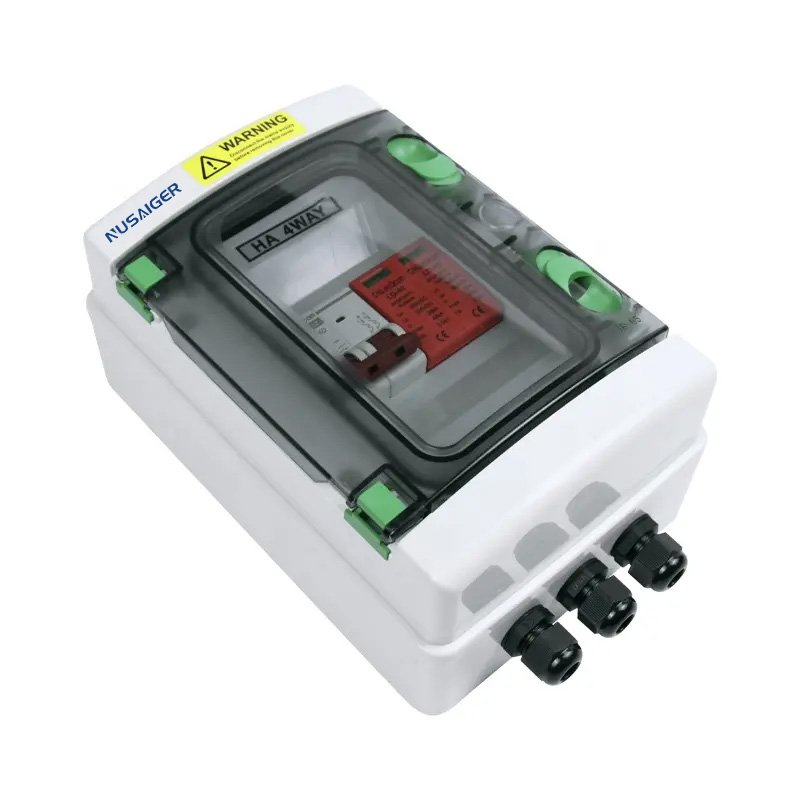How to Select the Right Photovoltaic Combiner Box for Your Solar Project
Key factors and expert advice for matching combiner box specifications to your PV system design.
1. Introduction
The photovoltaic (PV) combiner box is a vital Balance of System (BOS) component that consolidates multiple string outputs into a single bus, provides overcurrent protection, and may house surge protection devices and monitoring equipment. Selecting the right combiner box ensures optimal electrical performance, safety, and maintainability of the solar power system.
2. Understanding the Role of a PV Combiner Box
- String aggregation: Combines multiple PV strings into one or more outputs.
- Overcurrent protection: Fuses or breakers prevent damage from overcurrent or faults.
- Surge protection: Protects downstream equipment from lightning and transient voltages.
- Monitoring: Tracks current, voltage, and fault conditions at the string level.
3. Key Selection Criteria
3.1 Voltage Rating
Match the combiner box maximum voltage rating to your array’s maximum open-circuit voltage (Voc), including cold-weather Voc rise. Common ratings: 600 VDC, 1000 VDC, 1500 VDC.
3.2 Current Capacity
Consider maximum string current (Isc) and output bus capacity. Ensure conductors, busbars, and fuses are rated for continuous operation under expected temperatures.
3.3 Number of Inputs
Choose the correct number of string inputs to match your array configuration, with allowance for future expansion if needed.
3.4 Overcurrent Protection Type
Decide between fuse-based and breaker-based designs. Fuse designs are simpler and lower cost; breakers are resettable and may reduce downtime.
3.5 Surge Protection Devices (SPDs)
In lightning-prone areas, select combiner boxes with Type 1 or Type 2 DC-rated SPDs compliant with IEC 61643 or UL 1449 standards.
4. Environmental and Mechanical Considerations
4.1 Ingress Protection
Outdoor installations require at least IP65 or NEMA 4X rating to withstand dust and rain. Coastal or chemical environments may require corrosion-resistant enclosures.
4.2 Operating Temperature
Check manufacturer specifications for allowable ambient temperature range. High-temperature operation may require derating of components.
4.3 UV and Weather Resistance
Enclosure materials should be UV-stabilized for long-term outdoor exposure. Polycarbonate, stainless steel, and powder-coated aluminum are common choices.
5. Compliance and Safety Standards
- IEC 61439 for low-voltage switchgear and controlgear assemblies
- IEC 62548 for PV array installation
- UL 1741 for PV combiners in North America
- Local electrical codes (e.g., NEC Article 690)
6. Smart Monitoring and Communication
Advanced combiner boxes integrate monitoring electronics for current, voltage, insulation resistance, and temperature. Communication options include Modbus RTU/TCP, CAN bus, or proprietary protocols. This enables remote diagnostics and predictive maintenance.
7. Cost vs. Value
Lowest upfront cost may not equal best long-term value. Consider the impact of downtime, ease of fuse replacement, SPD replaceability, and monitoring benefits when evaluating total cost of ownership.
8. Step-by-Step Selection Process
- Define system voltage and current requirements
- Determine number of string inputs
- Decide on protection method (fuses or breakers)
- Specify SPD requirements
- Select enclosure material and IP rating
- Check compliance with relevant standards
- Evaluate monitoring and communication features
- Compare suppliers on performance, warranty, and service
9. Common Selection Mistakes
- Ignoring cold-weather Voc increases
- Undersizing busbars or conductors for temperature derating
- Overlooking future expansion needs
- Using indoor-rated enclosures outdoors
- Skipping SPD integration in high-risk areas
10. Conclusion
Choosing the right photovoltaic combiner box is a balance of electrical performance, safety compliance, environmental protection, and operational convenience. A systematic selection approach reduces risk, improves uptime, and maximizes the return on your solar investment.



